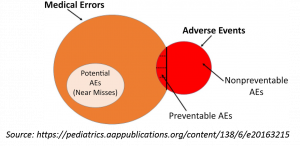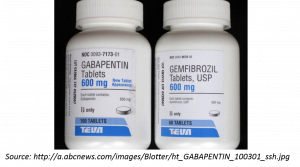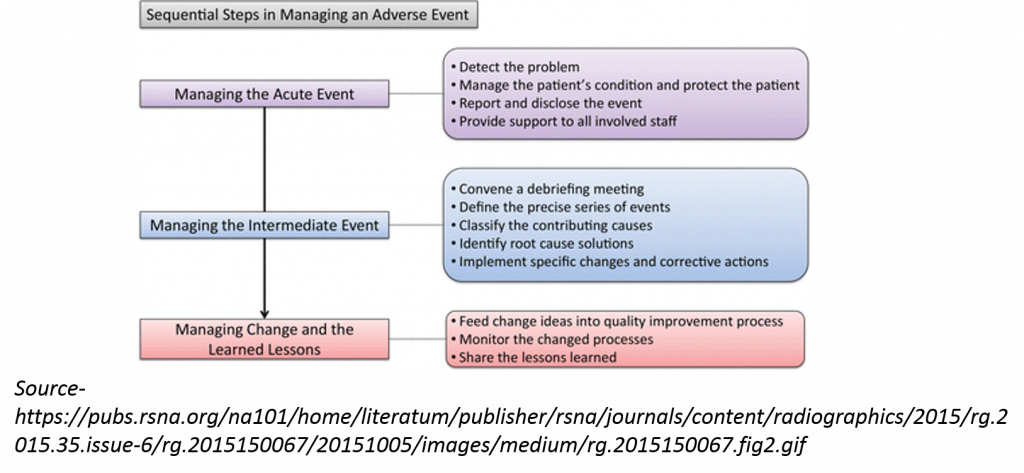Wishing you all a Happy Nurses’ Day
The theme for nurses’ day 2019 set by International Council of Nurses is “Nurses, A voice to Lead- Health for All”. The Council defined Health for all as “Health brought into reach of everyone in a given country.”

Source: https://www.icn.ch/sites/default/files/inline-images/IND2019%20LOGO.jpg
It is in consensus with the ‘Ayushman Bharat’ launched in India in 2018 pledging to provide holistic health to all.
No doubt, nurses will and are at the core, to reach people and provide the care in a holistic way. Learn about ‘Nurses day Theme 2019- Health for All’ here: https://www.youtube.com/watch?v=FTjCAbxTfwE
We celebrate nurses’ day every year but do we really ‘celebrate’ being the professionals we are?
“Unpraised, Unnoticed, Unseen, Undervalued”
Sounds familiar? Aren’t these the words we use for ourselves often? I know what you are thinking, it is about nursing so we are bound to use these words.
I beg to differ. One, you are more than JUST a nurse and two why should SOMEONE ELSE define who you are?
You might think, I am probably being unrealistic about it or a little philosophical. You might argue that the ground reality is different. The fellow doctor keeps yelling, the assistants don’t listen to you, your supervisor don’t listen to you or if you are a supervisor your junior do not listen to you. Anything in common here? NOBODY is listening to you J As per a study done at University of Minnesota, immediately after the average person has listened to someone talk, he remembers only about half of what he has heard—no matter how carefully he thought he was listening. Read more here: https://hbr.org/1957/09/listening-to-people

Source: https://narcsite.com/wp-content/uploads/2016/12/nobodys-listening.jpg
So, a nurse is not the only one in the world, to whom people are not listening to. Stop worrying about that. But on a serious note, communication is important and you can’t care for your patient if these people were not around.
Celebrate who you are
This nurses’ day, I want you to sit back and have a little perspective what does matter the most, whose opinion defines you as a professional and how do you want the world to look at you. We often use the phrase ‘Unsung heroes’ for nurses but it’s time that we break the curse and celebrated who we are. Recently, I read about something called the ‘Black-white thinking’ which is defining things narrowly like good or bad, this or that. Ironically, since childhood we all are taught to think that way. It is done by all of us but professionally I feel, we nurses use it a lot more.
Can you pick, which of the following is an example of Black-white thinking?
“I just can’t do it”
“I will try to do it”
“I think, I may be able to do it”
If you are thinking, the first one, you got it right. This is the case many a times when we are talking about nursing related issues. Either we are pulling ourselves down or saying it often for nurses.
“We are not appreciated”
“Nobody listens to us”
“We don’t get the opportunity”
I am aware there are bigger issues like unequal pay, appreciation, not being heard which are for real. But, do understand that, if you keep on repeating something, your brain has the power to turn it true. Particularly your subconscious mind is very powerful. How you direct your thoughts may empower you or make you weak. Read more here: https://foreverconscious.com/research-proves-the-power-of-the-subconscious-mind
You choose to be a nurse, you are good at what you do and you know your job well!
And if you are satisfied with what you do, chances are today or tomorrow people will take you seriously and would appreciate who you are. It doesn’t mean that you don’t stand for your rights or don’t take action when something is not right around you. It means that you do what feels right.
Some brave stories
It is always encouraging to hear something good, positive and progressive but I am sharing the brave stories of nursing heroes, some with happy endings and some with not as these storied needs to be put to light to remind us about some of our great heroes who are/were diligently working towards a better world. Let us look at some of the many nursing heroes who were brought to limelight with their untiring and unbeatable efforts.
Lini Puthussery- India’s ‘hero’ nurse who died battling Nipah virus. I am not even making the title. This is how BBC news honored a nursing hero who died caring for her patients. Salute!
Source: https://ichef.bbci.co.uk/news/660/cpsprodpb/4E4F/production/_101674002_capture.jpg
Firdousa- A brave nurse who walked 40 kms to report on duty to relieve other nurses working in ICU for 2 days despite curfew.

Source: https://i2.wp.com/www.greaterkashmir.com/wpcontent/uploads/2017/05/2017_5largeimg214_may_2017_003736423.jpg?fit=480%2C320&ssl=1
Anjali Kulthe- saved 20 pregnant women from the terrorists during 26/11 attacks in Mumbai.

Source: https://www.thebetterindia.com/wp-content/uploads/2018/11/As-262F11-terrorists-wrecked-havoc-at-Cama-hospital-this-brave-nurse-saved-20-Pregnant-Women-2.jpg
Saving people at roadsides, inside the hospital or out of the hospital, there are many incidences you must have heard. Know that you make a difference and without you the pillar of healthcare can never be steady.
Keep Moving forward- Let’s create more Heroes

Source: https://cdn.shopify.com/s/files/1/2283/1013/products/419-65-4E_Just_Keep_Moving_Forward-White_1024x1024.jpg?v=1510295222
- Make a choice- On this special occasion decide that you will move forward. It is a choice that you make. You can choose to crib or decide to work on it. Find solutions to your problems which are practical. If we convey this to our next generation that ‘nothing is in our hands’ believe me it is not (remember the black-white thinking!).

Source: https://us.123rf.com/450wm/alexlaplun/alexlaplun1611/alexlaplun161100018/66579998-cute-funny-man-on-the-crossroad-with-question-symbol-on-the-blue-background-choice-or-decision-carto.jpg?ver=6
- Remember ‘Live and Let Live’- If you believe that you can’t do it so how can your colleague or junior do it? Give chances to grow, open up and be the change you want to see. This is the mantra to progress together as professionals.
Source: https://online.king.edu/wp-content/uploads/Nurses-Support-Young-header-KING.png
- Update yourself- Keeping up professionally is easy and you know it. Many nurses do a lot and don’t showcase, but off course the scenario is changing. Try to stick to your guns and move towards what your goals are professionally. Look for options to collaborate and improve what you are doing.
There are many lateral options available other than taking up the many conventional role of nurses. You can work as a counsellor, educator, school health nurse, informatics nurse or a nurse consultant in India and yes these options are available. There are innovations happening in healthcare which are giving opportunities to grow. Carve your niche!
“Nurses use our virtual platform for calls, text, patient survey, health education and counselling for more than 30, 000 patients across India. The results are analyzed and alerts are created around high risk patients” says Dr. Neelesh Bhandari, HealthO5 co-founder of a tech company who vouches for the efforts put in by the nursing team.

Source: https://cognigen-cellular.com/images/nursing-clipart-health-career-11.png
- Update yourself- Just checking if I still have your attention J remember to update yourself personally. Don’t forget that you have needs too. Read, learn, pursue a long lost hobby, exercise, go out with your friends you haven’t called for long. Doing something for yourself will not only motivate you but keep your confidence boosted, you will also be less stressful and not pass that stress to your team. So you are actually saving someone else as well if you take care of yourself. Stress is bound to happen and we know nurses undergo a lot whether you talk about resources, physical demand, staff shortage or maintaining work-life balance. An effort is required at your end to keep you sane.

Source: http://www.soidergi.com/wp-content/uploads/yo/young-woman-practicing-yoga-standing-in-tree-vector.jpg
- Celebrate success- small things are the big things in life. Celebrating individual or team efforts are worthwhile. Think of a patient who went home without pressure sore after a long stay, the team effort of resuscitating a patient who was saved or may be a colleague who completed their higher education. Make little steps count. After all, this is where you spend half your life after home.

Source: http://clipart-library.com/images/8cAbXXqxi.jpg
To conclude:
Be brave, challenge yourself and keep moving forward! I stop here with this wonderful quote that aptly describes a nurse. Do share your ‘hero story’ in the comment section.
“HAVE A HEART THAT NEVER HARDENS.
A TEMPER THAT NEVER TIRES.
A TOUCH THAT NEVER HURTS” – Charles Dickens
References:
- BBC news. Lini Puthussery: India’s ‘hero’ nurse who died battling Nipah virus. 2018 May 22. Available from: https://www.bbc.com/news/world-asia-india-44207740
- This dedicated nurse walked 40 km through Srinagar’s curfew and riots to reach her hospital. 2016 July 15. Available from: https://yourstory.com/2016/07/firdousa-rashid
- Aranha J. On 26/11 This brave nurse saved 20 pregnant women from the terrorists bullets. The better India. 2018 Nov 26. Available from: https://www.thebetterindia.com/165211/26-11-cama-hospital-attack-hero-kasab-mumbai-news/








